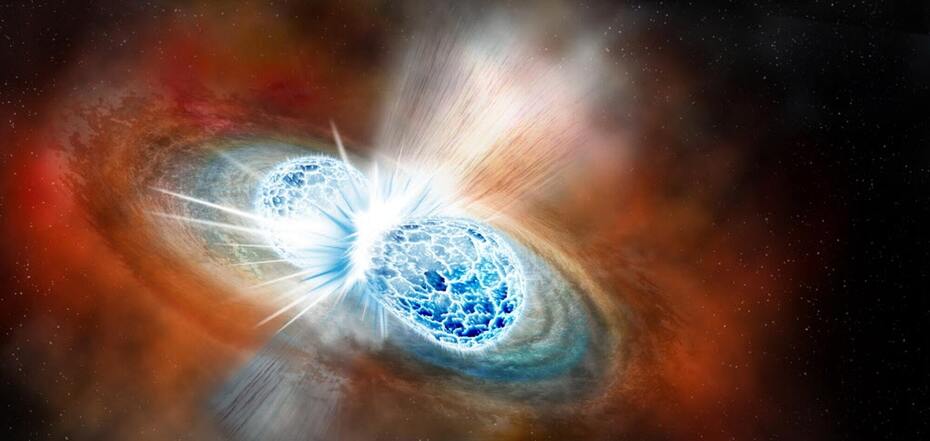News
Physicists recorded significant amount of tellurium after explosion in space for the first time
A pair of neutron stars that had been spiraling for hundreds of millions of years, approaching each other, finally collided, triggering a massive explosion known as a kilonova. While this process is nothing new to scientists, the thing that followed it was the first ever seen. The force of this powerful explosion led to the formation of rare chemical elements, including those that are essential for life on Earth.
This is stated in a study published in Nature. In March 2023, Andrew Levan, an astrophysicist at Radboud University, and his colleagues observed how a kilonova located about a billion light-years from Earth switched from a bright burst of gamma rays to a steady infrared glow.
To study it, they used the Mid-Infrared Instrument (MIRI) of NASA's James Webb Space Telescope (JWST). Thanks to this, they were able to measure the spectrum of light coming from the cloud of space debris left behind after the explosion.
Neutron stars are the burned-out cores of massive stars that remain after a star burns up all its nuclear fuel and explodes in a supernova. As a result of such an explosion, the star's core is destroyed and packed so tightly that the atoms are broken into smaller particles called neutrons. As a result, neutron stars are created, which are among the densest objects in the Universe. Only a black hole can compete with the density of a neutron star.
The collision of two such dense neutron stars creates an epic explosion. However, the kilonova observed by the researchers was so powerful that it emitted gamma rays into space for more than three minutes, although this process usually lasts a few seconds. They suspect that it may have been something even more impressive. For example, the collision of a neutron star with a black hole or the merger of two neutron stars into a new hypermassive neutron star.
The power of the explosion was not the most interesting thing the scientists saw. They were even more surprised by the chemical trail left by the explosion. It turned out that the kilonova provoked the appearance of rare and extremely important elements in space.
"All the neutrons in a neutron star are ejected and caught by atoms, forming a set of unstable elements. They decay to form stable elements," Levan told Inverse.
This is how the scientists noticed that tellurium was formed, as well as iodine, a mineral mammals (and thus humans) cannot live without. Chemists had previously suspected that tellurium is formed when atoms capture stray neutrons, but no one was sure what kind of cosmic event would create the right conditions for this process.
"This is the first time we've seen a significant amount (of tellurium) produced, and it helps bridge the gap between what we see in the world around us and what we know the universe can give us," explained study co-author Benjamin Gompertz, an astrophysicist at the University of Birmingham.
Iodine is an important component of thyroid hormone, which controls metabolism in the body. Knowing where it came from on our planet billions of years ago is another part of the story of how life on Earth originated and evolved.
Tellurium, on the other hand, is a very strange metal that is used in some solar panels and other technologies. It is relatively rare on Earth because it tends to bond with hydrogen and evaporate into space. Unlike iodine, tellurium is poisonous to the human body, but probably plays a role in the formation of planets.
Earlier, OBOZ.UA reported that the collision of two neutron stars and the explosion of a kilonova would be devastating for our planet.
Subscribe to OBOZ.UA on Telegram and Viber to keep up with the latest events.



























